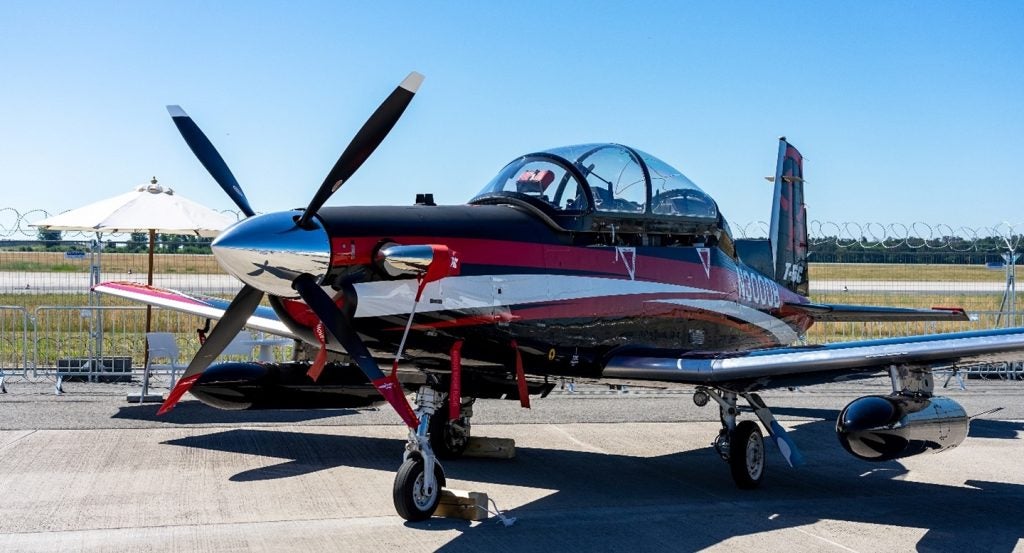The US Department of Defense (DoD) has allocated $29.3m as part of a contract modification for Textron Aviation at the end of May to build three additional T-6C Texan II trainer aircraft.
This iteration serves as an improved version of the T-6B primary aircraft training system – of which the US Air Force currently has 251 units in its inventory. Beechcraft improved the trainer to provide reliable training operations with lower maintenance and operational costs than its predecessors.
T-6C features a hard-point wing to carry external fuel tanks, weapons and other external stores. The aircraft is capable of providing military training for more than 18,720 hours.
It is equipped with a trim aid device to reduce the need for rudder control and uses CAE’s ground-based training systems, including an operational flight trainer, computer-based classroom training systems, courseware, and full-mission simulators.
T-6C has been in active service with the Royal Moroccan Air Force from as early as 2010. Thereafter the Royal New Zealand Air Force, the Mexican Air Force, the Royal Thai Air Force, the UK Royal Air Force, the Columbian Air Force and the Tunisian Air Force also procured the military flying system.
US Air Force diverges
Although the US-manufactured Texan II has grown in popularity on the global market, and despite operating hundreds of T-6A/Bs for about 25 years, the US Air Force (USAF) recently diverged in its selection of the T-7A Red Hawk for its future trainer.
US prime and Red Hawk manufacturer, Boeing, announced that it had verified the performance of the trainer in three evaluation tests at the end of April 2024, ahead of delivery to the USAF.
Red Hawk is a digitally designed, low-risk, live, virtual and constructive fifth-generation system used for fighter pilot training. It will replace the 1960s-era T-38 Talon aircraft. Its digital design allows for cost-effective integration of training capabilities that can improve pilot training for the next generation of fighter and bomber pilots.









